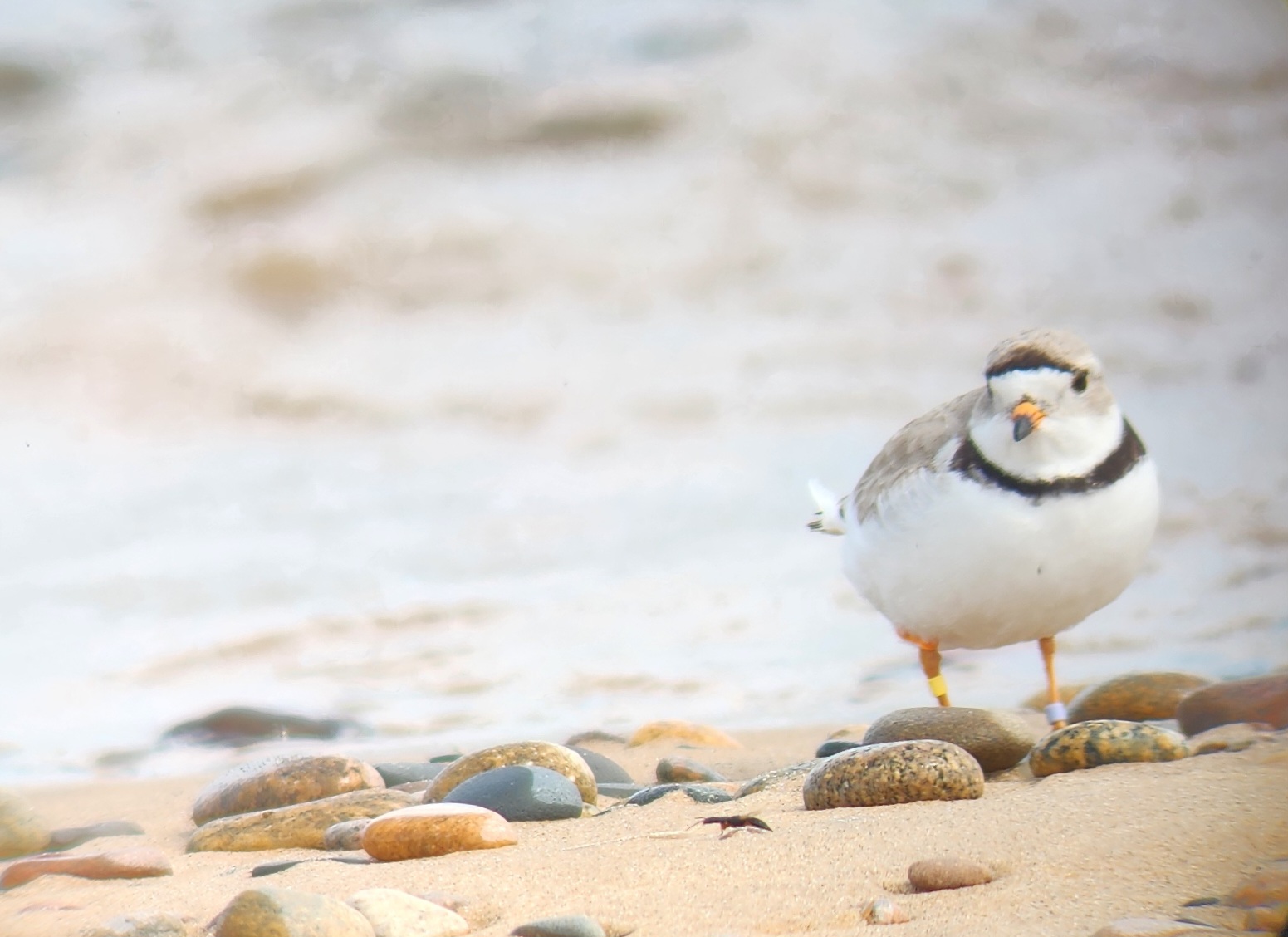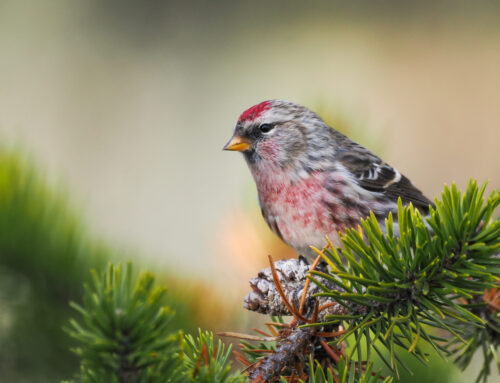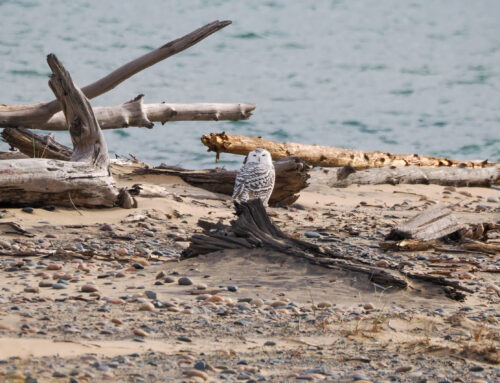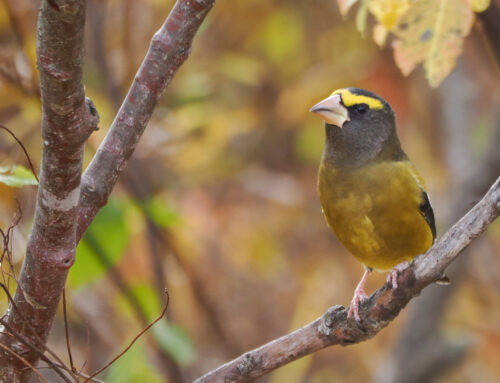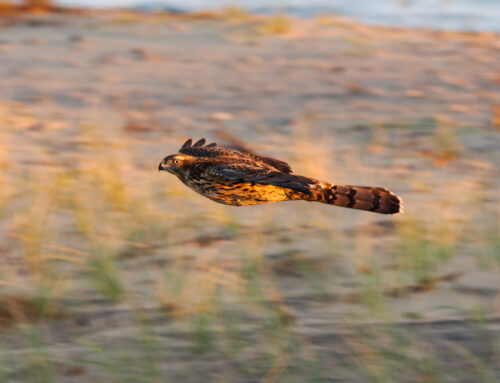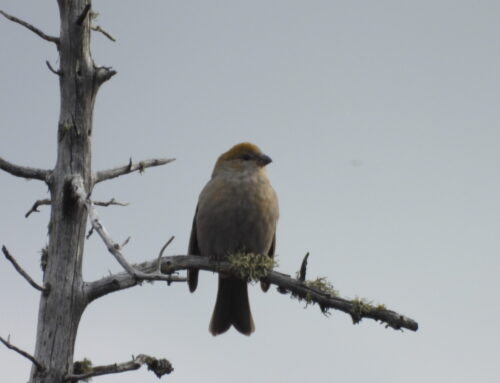Whitefish Point
Vie has laid her fourth egg, meaning incubation has begun! In around 26 days tiny Piping Plover chicks will be running around at the Point. In the meantime Vie and Little Bill Bob will be taking turns sitting on the eggs while the embryos develop inside.
Hot Shot is still moseying around the point in search of a female. Good thing there’s enough time left in the season, and hopefully a mate will come. His yearning has seemed to turn into aggression though, as he can be observed frequently chasing any Killdeer or Spotted Sandpiper in his path.
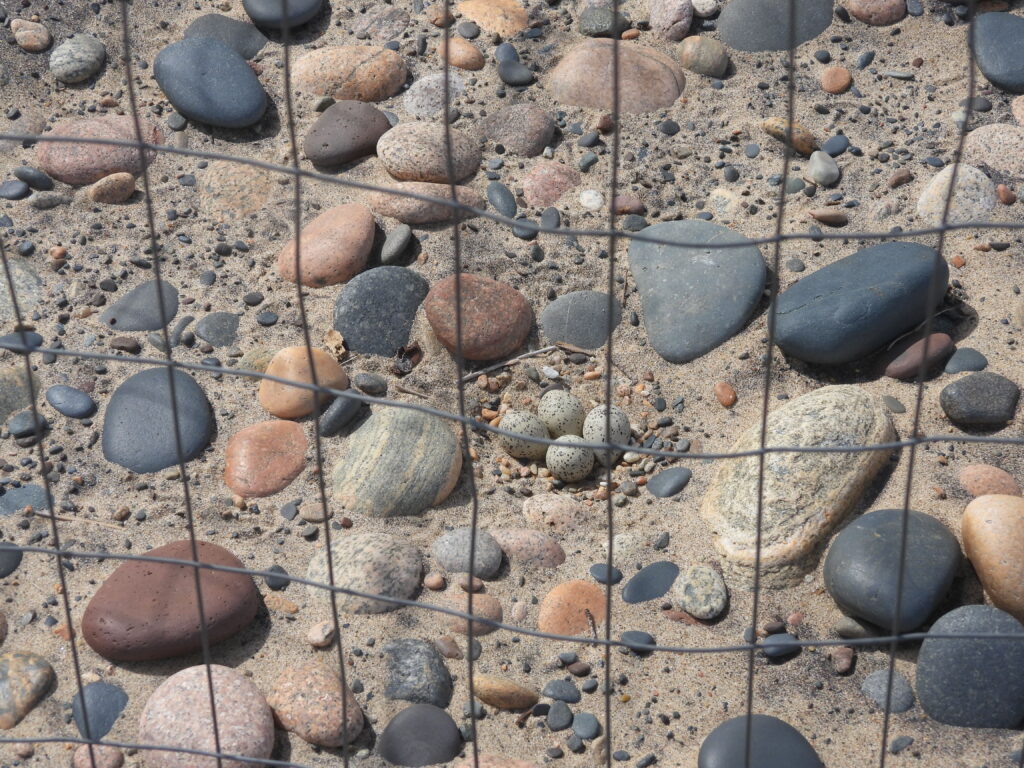
Vie and Little Bill Bob’s nest at four eggs. Photo by Polly Sheppard
Vermilion Point
While life has been calm and copacetic at WFP, a lot has been going on at Vermilion. On Saturday May 24, I traversed the beach sleuthing for an imminent nest from the second pair there. I found the two plovers quite soon as usual, just a bit East of the beach entrance. They peeped at me persistently per usual too, frantically running around the beach trying to put distance between us. I gave them their space and followed from afar, stepping carefully while watching every step. They took me in a large circle, and I scanned every inch I could. Eventually I gave up and decided the best action was to sit and watch them. But they didn’t really do anything, just foraged and paced around aimlessly. I considered leaving them be and checking on the first nest but decided to just change my positioning. I went and hid behind the dunes, peeking out like some sort of spy. There I saw the female nestle into a spot in the sand. Did she just tuck something beneath her? She would scoot her feet behind her like a male does when creating a scrape, deepening the spot. Sometimes she would stand and walk around eventually sitting in the same spot, appearing to tuck something beneath her each time. The male stood nearby on guard. After some time, the two wandered away, far enough I felt comfortable approaching. And there I saw a single egg.
Later that day I went to Bunny’s nest further East. No one was on the nest, despite there being four eggs. The male stood nearby on the shore, slowly heading West before flying off. After an hour of waiting and searching around, still no one showed. The Banding Crew is checking the nest the day I write this, and we should have more information next blog.
— Stephanie Owens, 2025 Piping Plover Monitor
Featured Photo: PIPL Vie on the shore by Stephanie Owens
Piping Plover monitoring is a collaborative effort between Michigan Audubon and Seney National Wildlife Refuge (USFWS).
You can keep up with the 2025 Piping Plover action at WPBO by reading Stephanie’s blog posts and following WPBO’s social media (Facebook, Instagram, and X).
Stephanie Owens: 2025 Piping Plover Monitor
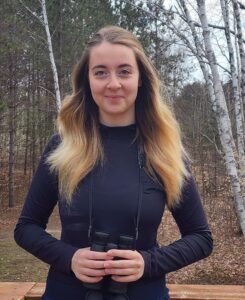 Having grown up in the Upper Peninsula of Michigan, an appreciation of the outdoors seemed inevitable for Stephanie. Walks in the woods with her father and high school science courses helped her identify this passion. In 2024, she earned a Bachelor of Science in Conservation Biology from Lake Superior State University, where she completed her senior thesis on the distribution of per- and polyfluoroalkyl substances in Eastern Upper Peninsula waterways. Now, with three seasons of PIPL monitoring under her belt, she looks forward to another summer with the U.P. plovers and returning to WPBO after a successful ’24 season. After the end of last season, Stephanie began her work at Eva Burrell Animal Shelter as a canine caretaker, fostering hope and love for all animals there.
Having grown up in the Upper Peninsula of Michigan, an appreciation of the outdoors seemed inevitable for Stephanie. Walks in the woods with her father and high school science courses helped her identify this passion. In 2024, she earned a Bachelor of Science in Conservation Biology from Lake Superior State University, where she completed her senior thesis on the distribution of per- and polyfluoroalkyl substances in Eastern Upper Peninsula waterways. Now, with three seasons of PIPL monitoring under her belt, she looks forward to another summer with the U.P. plovers and returning to WPBO after a successful ’24 season. After the end of last season, Stephanie began her work at Eva Burrell Animal Shelter as a canine caretaker, fostering hope and love for all animals there.

